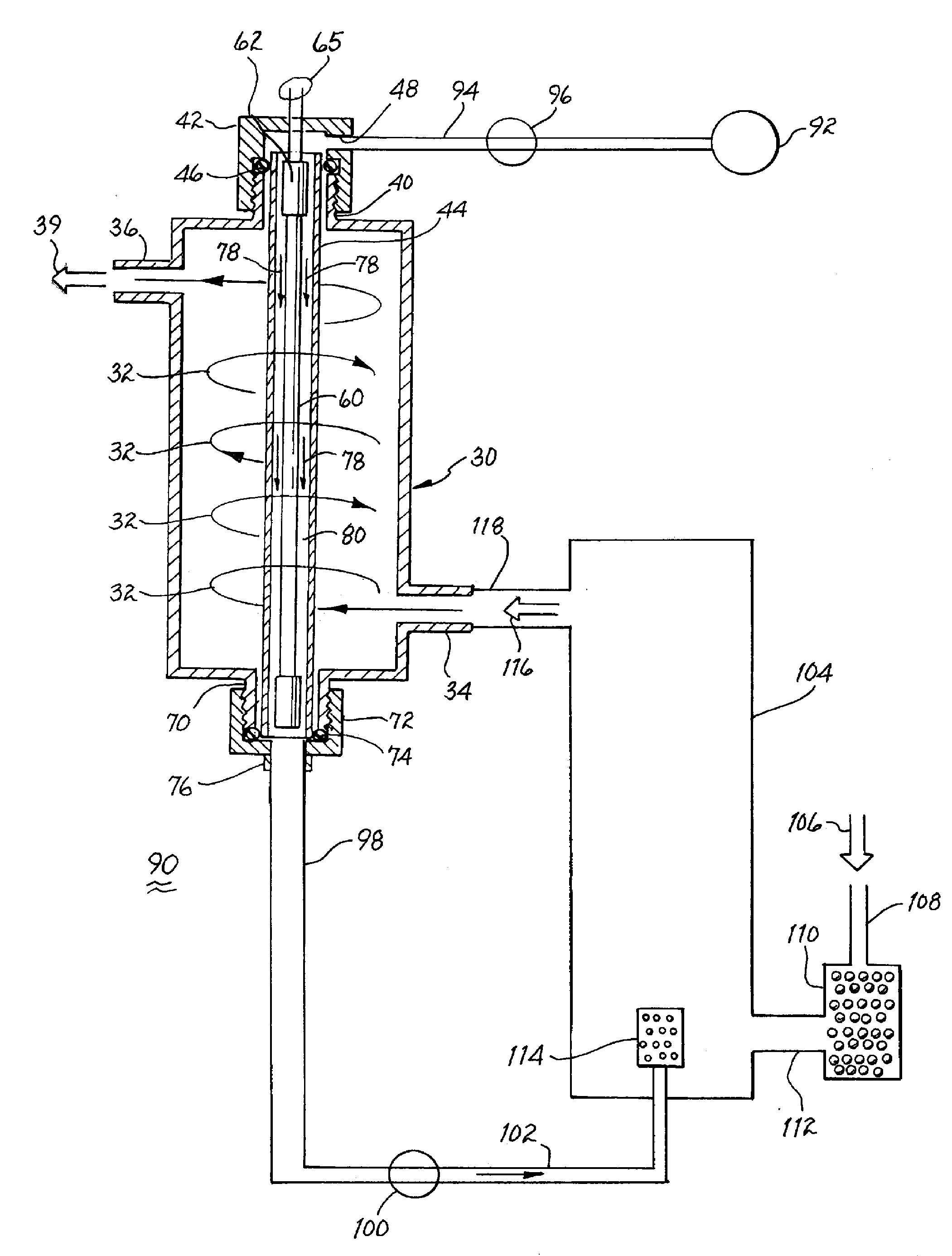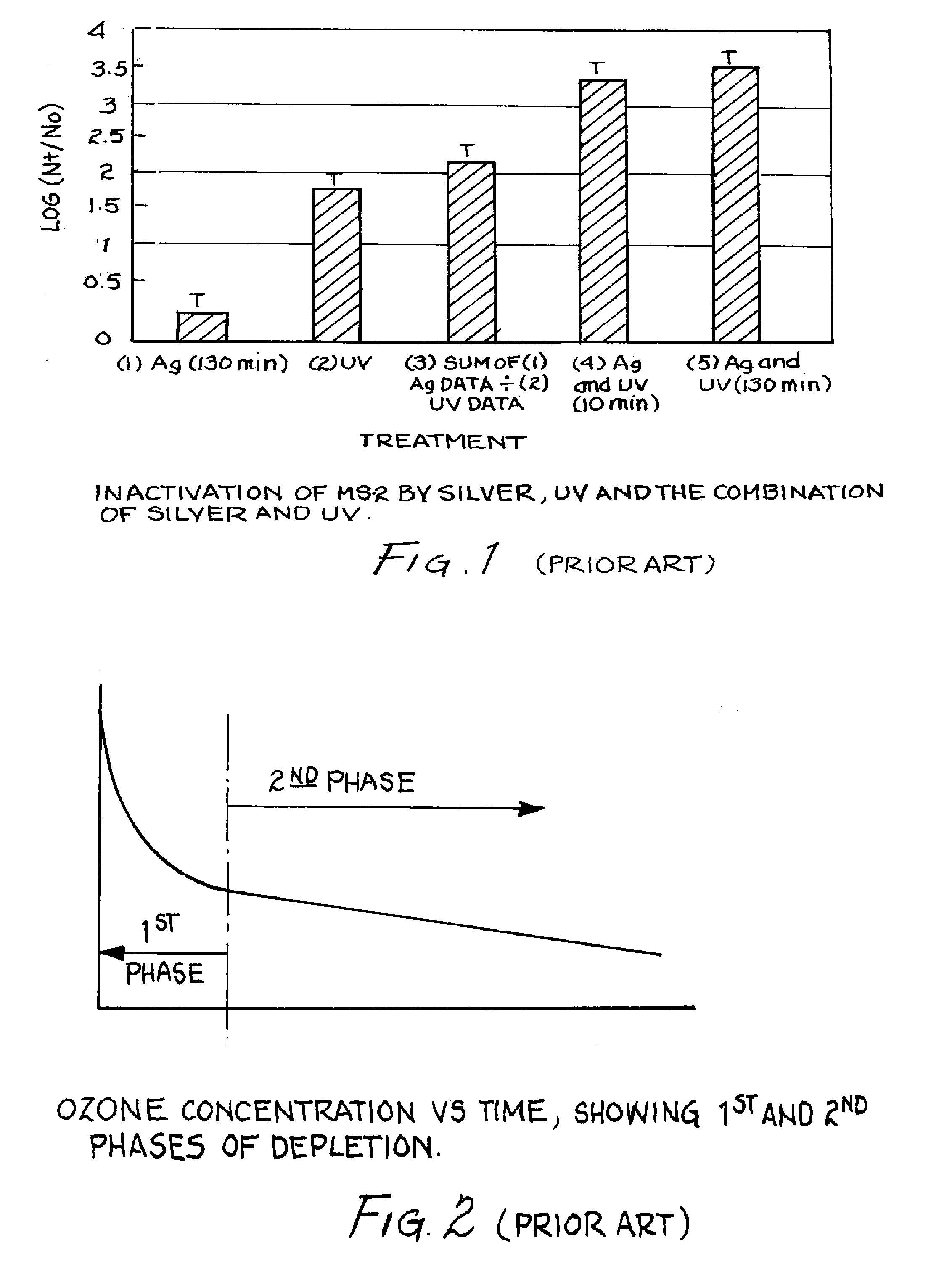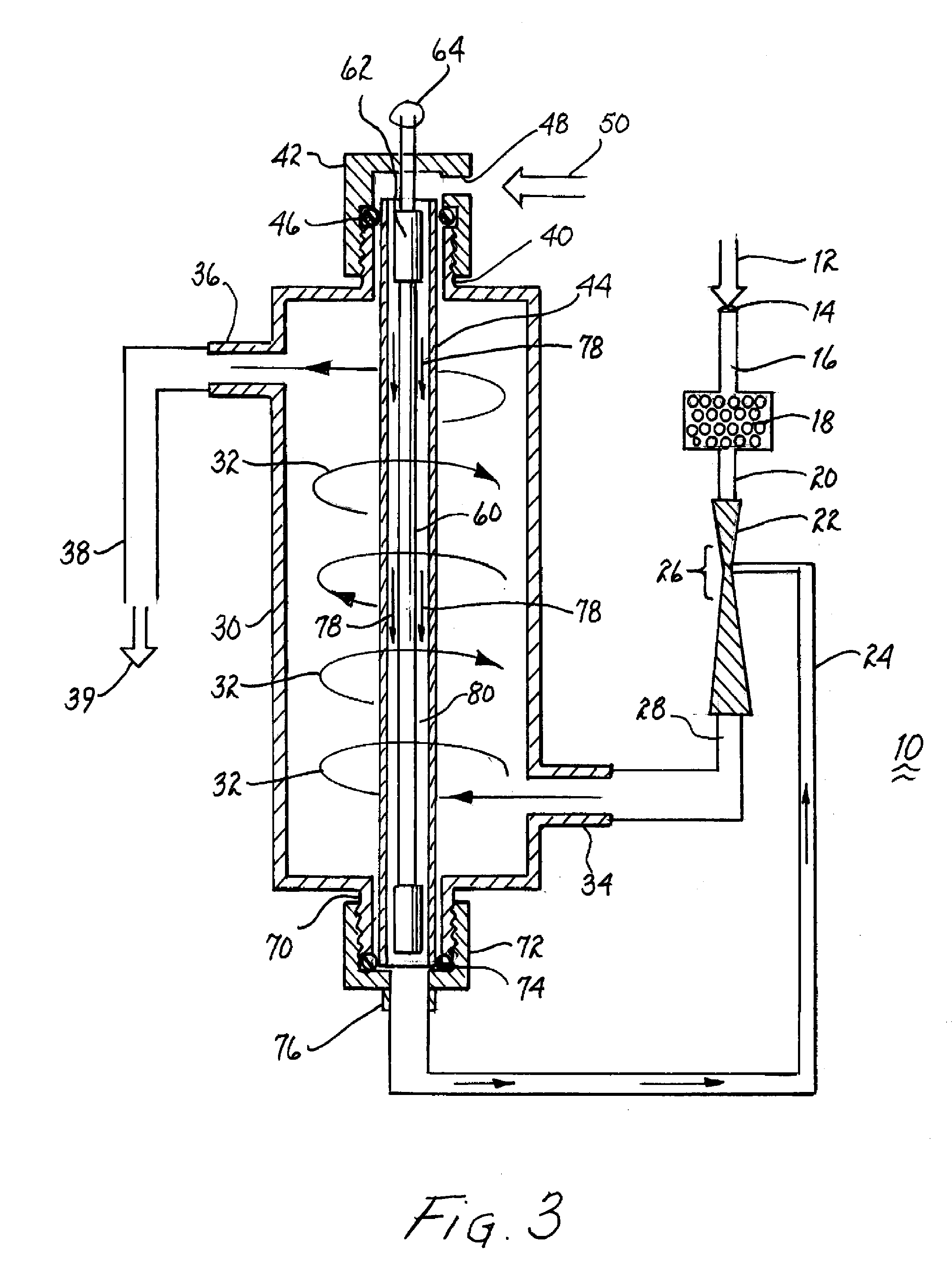Apparatus and method for preventing biological regrowth in water
- Summary
- Abstract
- Description
- Claims
- Application Information
AI Technical Summary
Benefits of technology
Problems solved by technology
Method used
Image
Examples
examples 1-8
[0052]In examples 1-8, the biocidal efficacy against E. Coli of both silver and chlorine in the presence of three different concentrations of Total Organic Carbon (TOC) (i.e. 0 mg / L, 3 mg / L and 10 mg / L) were compared. In all cases, the starting water was de-chlorinated tap water. The TOC was generated by addition of humic acid. These tests measure the ability of these two secondary disinfectants to remain biocidal in water for extended periods of time should the water be ladened with natural organic matter. As can be seen from examples 1-4, silver is not affected by the presence of humates whereas chlorine (examples 5-8) readily loses its biocidal efficacy presumably due to oxidation of the humate by the chlorine. The controls had neither chlorine, silver nor TOC added.
Log10 Reductiona of E. coli (Initial Inoculum=4.50×106 CFU / ml) after Exposure to Silver in the presence of Total Organic Carbon.
Log10 Reductiona of E. coli (initial inoculum = 4.50 × 106 CFU / ml)after exposure to silve...
examples 9-20
[0053]In examples 9-20, the biocidal efficacy of UV, ozone and silver were assessed by observing the Log10 reduction of MS-2 bacteriophage. In all cases, the starting water was de-chlorinated tap water. A flow-through 2-liter per minute water treatment device providing a dosage of 50 mJ / cm2 UV was used. The UV lamp was allowed to warm up for three minutes prior to each experiment. The ozone being generated by the UV lamp was injected into the water stream immediately in front of the UV chamber. The ozone dose was approximately 0.08 mg / l. In the experiments using silver (Ag), the silver (as silver nitrate) was added either five (5) minutes prior to simultaneous UV / Ozone exposure, or was added afterwards (with a five (5) minute incubation prior to addition of the neutralizer). The concentration of silver used was 100 ppb. From the data, it can be concluded that employing silver prior to the UV and ozone is advantageous.
Log10 reduction of MS-2 after exposure to variouscombinations of U...
examples 21-25
[0054]In examples 21-25, the biocidal efficacy of UV, ozone and silver were assessed by observing the Log10 reduction of Adenovirus type 2. In all cases, the starting water was de-chlorinated tap water. A flow-through 2-liter per minute water treatment device providing a dosage of 50 mJ / cm2 UV was used. The UV lamp was allowed to warm up for three minutes prior to each experiment. The ozone, being generated by the UV lamp, was injected into the water stream immediately in front of the UV chamber. The ozone dose was approximately 0.05 mg / L. In the experiment using sliver (Ag), the silver (as silver nitrate) was added three (3) minutes prior to simultaneous UV / Ozone exposure. The concentration of silver used was 100 ppb. From the data, it can be concluded that employing silver prior to the UV and ozone is advantageous.
PUM
| Property | Measurement | Unit |
|---|---|---|
| Fraction | aaaaa | aaaaa |
| Fraction | aaaaa | aaaaa |
| Wavelength | aaaaa | aaaaa |
Abstract
Description
Claims
Application Information
 Login to View More
Login to View More - R&D
- Intellectual Property
- Life Sciences
- Materials
- Tech Scout
- Unparalleled Data Quality
- Higher Quality Content
- 60% Fewer Hallucinations
Browse by: Latest US Patents, China's latest patents, Technical Efficacy Thesaurus, Application Domain, Technology Topic, Popular Technical Reports.
© 2025 PatSnap. All rights reserved.Legal|Privacy policy|Modern Slavery Act Transparency Statement|Sitemap|About US| Contact US: help@patsnap.com



